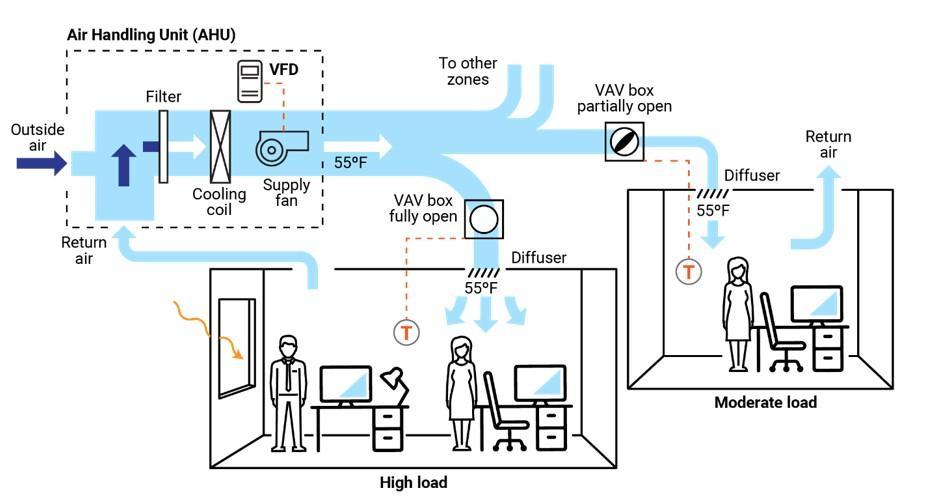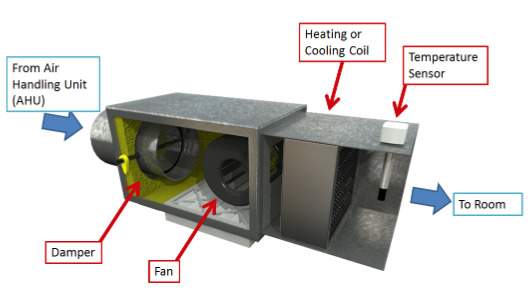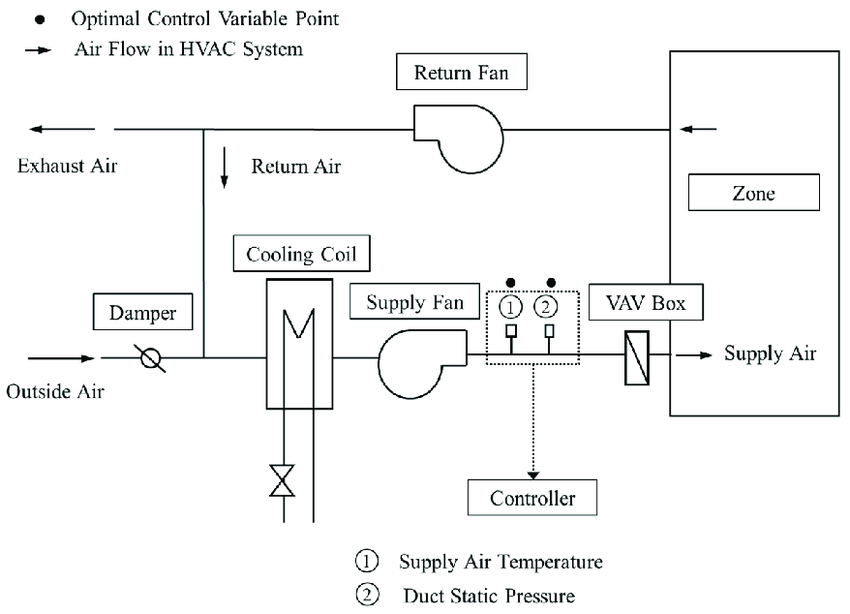📘 Variable Air Volume (VAV) Systems
Variable Air Volume (VAV) systems are HVAC air distribution systems that control airflow to individual zones by varying the volume of air supplied, rather than the temperature. This enables precise temperature regulation, reduced energy consumption, and quieter operation in commercial buildings.
🔧 What is a VAV System?
A VAV system modulates airflow to different building zones based on temperature demands. When cooling is needed, the VAV box opens to allow more air. As the temperature approaches the setpoint, the damper closes to reduce airflow.
Unlike constant air volume (CAV) systems that maintain a fixed airflow, VAV systems adjust airflow to improve comfort and efficiency.
🧩 Components of a VAV System
1. Air Handling Unit (AHU)
-
Provides constant temperature, conditioned air
-
Located centrally
-
Works with supply fans, coils, filters
2. VAV Terminal Units (VAV Boxes)
-
Installed in ceiling spaces
-
Contain dampers, actuators, sometimes reheat coils or fans
-
Regulate air volume to each zone
3. Thermostats & Controls
-
Communicate with VAV box actuators
-
Control damper position based on zone temperature
-
Integrate with building automation systems (BAS)
🔁 How It Works
-
The AHU sends air at a constant temperature through the main duct.
-
Each VAV box modulates a damper to increase or decrease airflow.
-
If heating is required, some VAV boxes include electric or hot water reheat coils.
-
A thermostat in each zone maintains user comfort by adjusting damper position.
🏢 Common VAV Configurations
📈 Advantages
-
✅ Energy-efficient zone control
-
✅ Lower fan energy due to reduced airflow
-
✅ Quiet operation
-
✅ Adaptable to varying occupancy and load
📉 Limitations
-
❌ More complex controls
-
❌ Higher initial cost
-
❌ Requires careful balancing and commissioning
📷 Diagrams & Images
🔹 Typical VAV System Layout
🔹 Inside a VAV Box
🔹 Zone Temperature Control Loop
🛠️ Maintenance Tips
-
Inspect dampers and actuators regularly
-
Verify thermostat calibration
-
Clean filters in fan-powered boxes
-
Perform airflow and temperature testing annually
🏁 Summary
VAV systems offer scalable, zone-specific comfort and energy efficiency in commercial HVAC designs. With proper design, installation, and maintenance, they significantly reduce operational costs while maintaining high occupant comfort.



